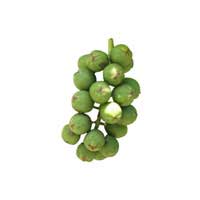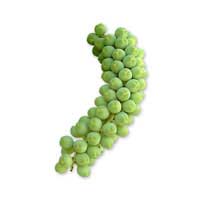 Full List of Fruits
Full List of Fruits  Pigeon plum
Pigeon plumPigeon plum Fruit
Scientific name - Coccoloba diversifolia
Pigeon plum has a scientific name Coccoloba diversifolia , the size of the tree is restricted from small to medium with a height of 10m exceptionally to 18m. Their leaves are of 3-13 cm in length and 1-7 m in breadth have a smooth edge , wavy in nature, oval to oblong , round and pointed edges, leathery texture, with brighter green color and paler in the bottom, the size of the leaves are larger when mature rather than when they are young and when they are in root sprouts. The tree cannot tolerate frost but withstands high winds, salt and drought.
The fruit comes under the dry fruit classification known as achene which is 6-10 mm in length enclosed by a dark edible fleshy perianth ripening takes place in the fall, the flowers on the female trees are followed by the fruit appearing smaller in size , oval to round, with a diameter of ˝ inch , The ripening takes place during autumn and winter, they turn out to be dark red or purplish. The fruit resembles an achene and grown as groups only. The thin pulpy coat is covered by a single layered large hard ‘stone'. The fruits are eaten by birds and animals and dispersed making it very sour and astringent for human taste so they are stored for few days and then consumed. The fruit’s juice is used in preparing jelly and a perfect wine too. The fruits are not consumed and sold in the local markets which happened only in the past.
The fruits are utilized in Bahamas to treat gastrointestinal problems such as diarrhea also a soothing material and also in aphrodisiac teas. Their fruits are consumable either raw state or even used in preparation of jellies and wine too. The wooden part is useful in carving. The fruits help in feeding various birds and also iguanas where they evolve.
Cultivation is possible in a moist , well-drained soil , mostly in areas which receive good sunshade and partly shaded places too, also in median strips throughout the length of highways. The tree provides a good shade, with thick branches it’s attractive to make landscapes . They contain cluster of trunks that are parallel to each other . The trees with stand high winds, droughts, salty conditions, therefore they can survive in sandy, rocky and tidewater areas. They are used to form hurricane barriers along the coastal areas


















